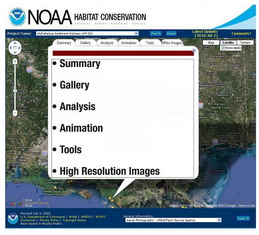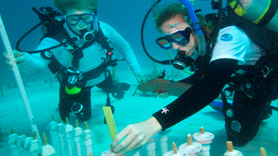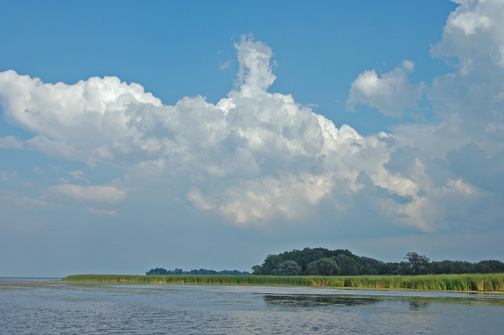Habitat Restoration Techniques from NOAA ~ National Marine Fisheries Service:
http://www.habitat.noaa.gov/restoration/techniques/
 |
| NOAA Habitat Restoration Monitoring Map (NOHARM) |
The goal of habitat restoration is to rebuild a healthy, functioning natural ecosystem that works as it did before it was polluted or destroyed. The NOAA Restoration Center works throughout the United States to restore coastal habitats using a variety of techniques. These projects can either use active restoration, which includes "on-the-ground" or "dirt-moving" activities, or passive restoration, which involves changes to management practices and use of landscapes.
Techniques at a Glance
Typical active restoration techniques include:
- Removal of fish passage barriers
- Oyster reef construction with natural materials
- Re-vegetation of riparian (rivers and streams) and wetland areas
Typical passive restoration techniques include:
- Installation of fencing to minimize cattle access to a stream
- Minimization of vehicular access to estuary and beach
- Purchase of conservation easements
Habitat Restoration Monitoring

It is important to monitor and assess restoration projects to ensure that the money, time, and effort invested are being efficiently and effectively spent. Successful monitoring can prevent many problems associated with restoration projects, by providing early warning signals if a project is not on track, improve ongoing project coordination, and enhancing future planning to ensure that project goals are being met. Whenever possible, monitoring protocols should be determined before the first shovel strikes the ground and before any measurements are taken in the field.
The NOAA Restoration Center requires its partners to monitor each of the projects it funds.
Monitoring at a Glance
There are four main types of project monitoring:
- Pre-implementation monitoring—Provides baseline information to compare with post-implementation data to determine whether the restoration is having the desired effect.
- Implementation monitoring—Ensures the project is being implemented as planned and identifies needed modifications.
- Effectiveness monitoring—Enables restoration practitioners to evaluate whether a specific project has met its objectives.
- Validation monitoring—Allows restoration practitioners to determine whether long-term restoration goals are being achieved.
